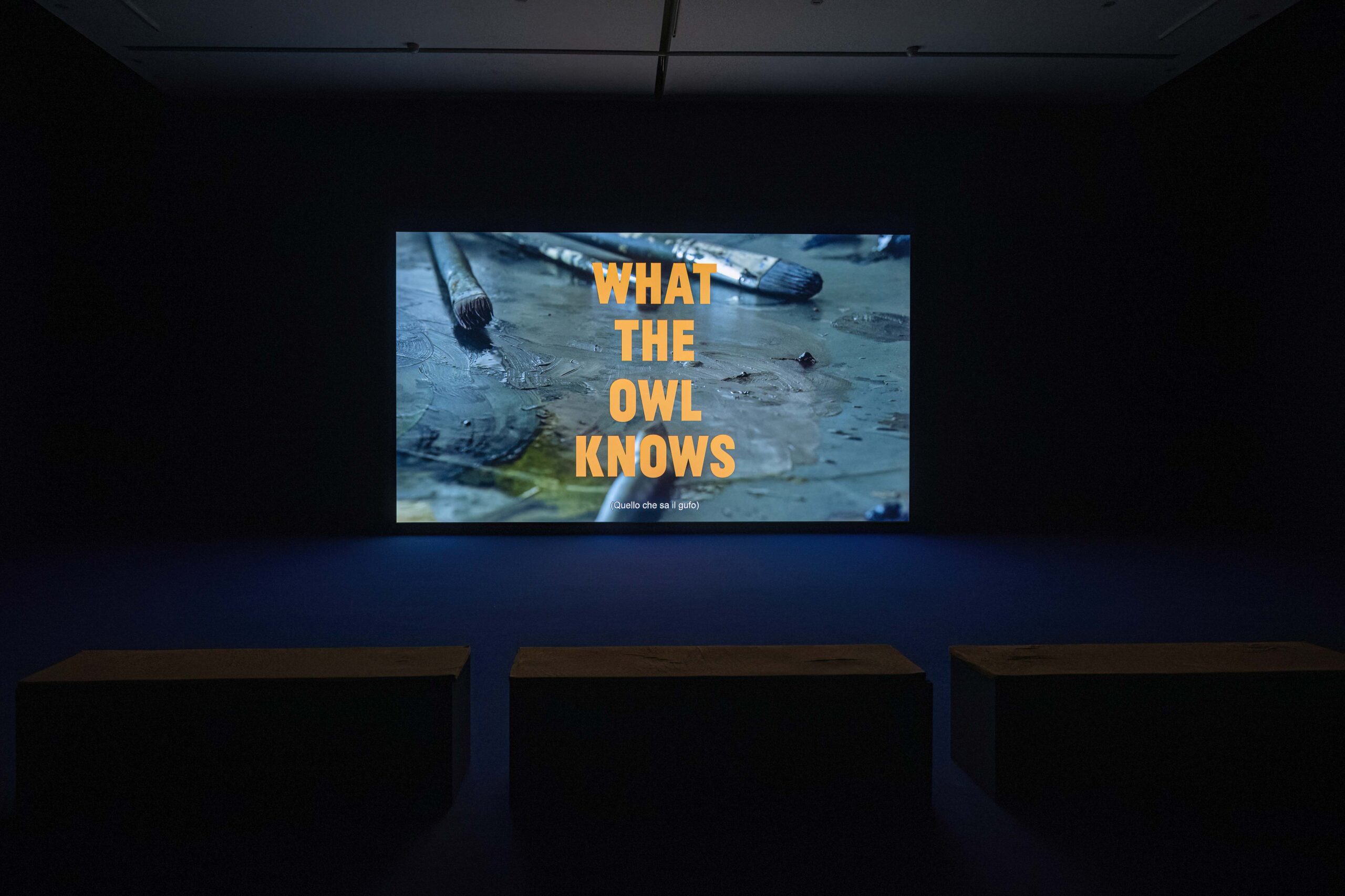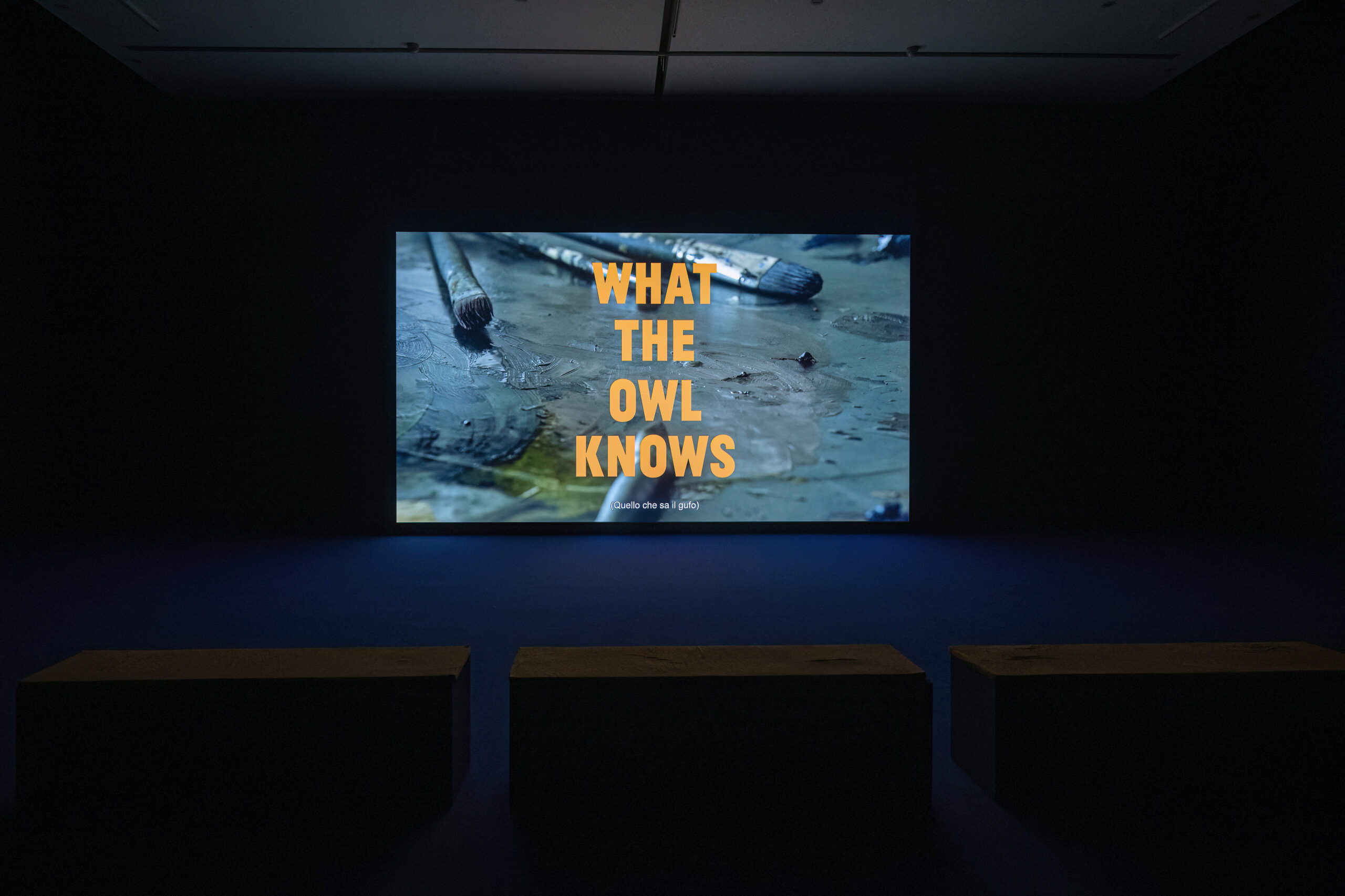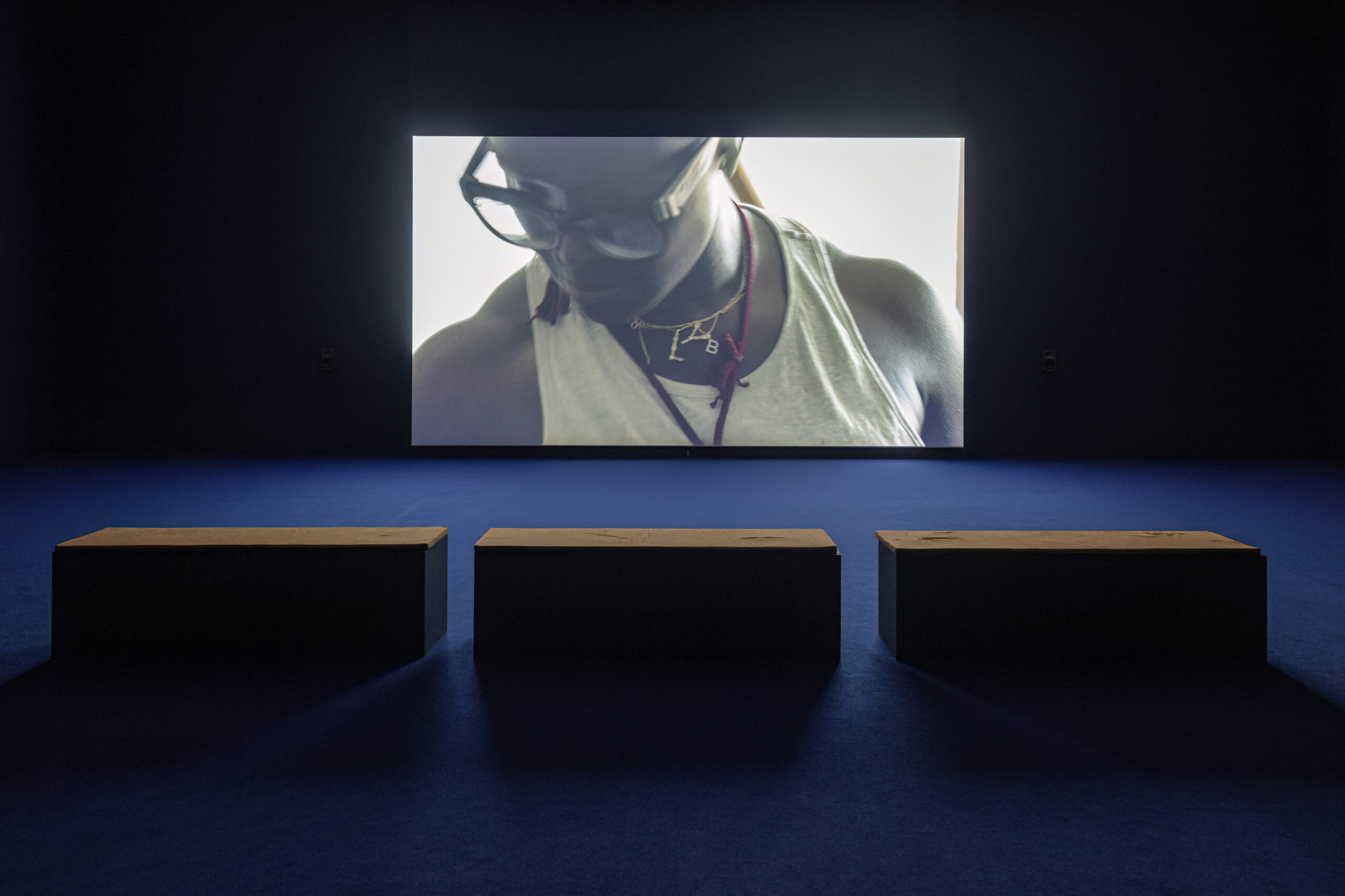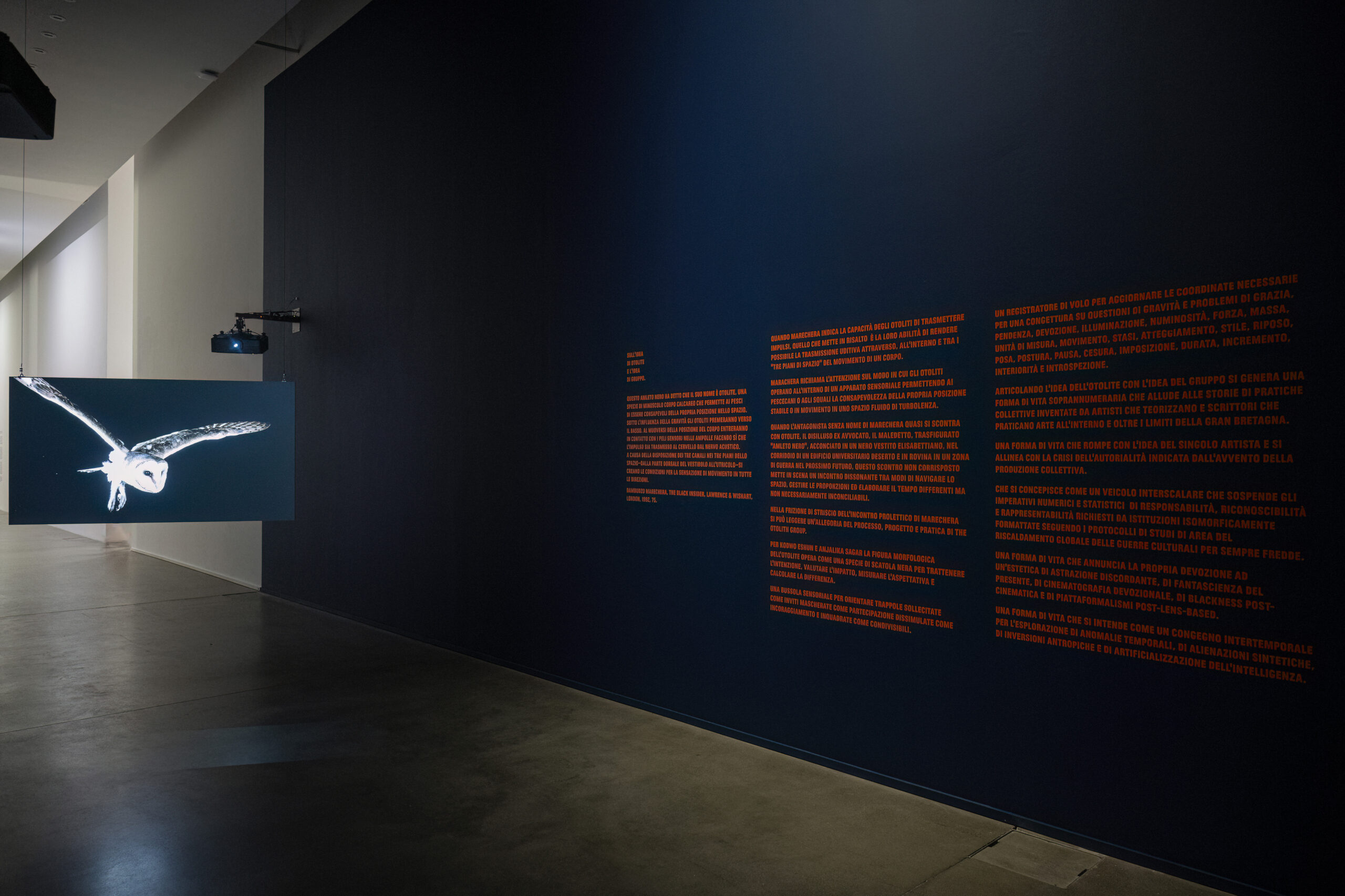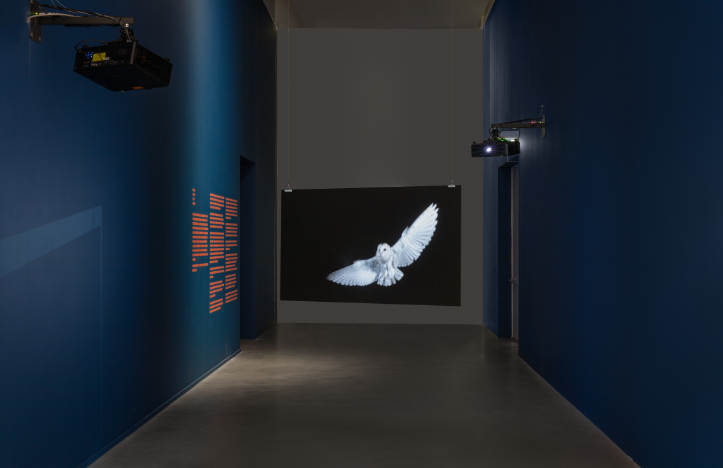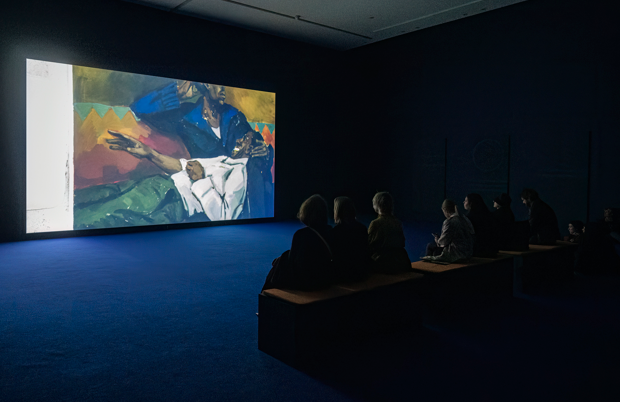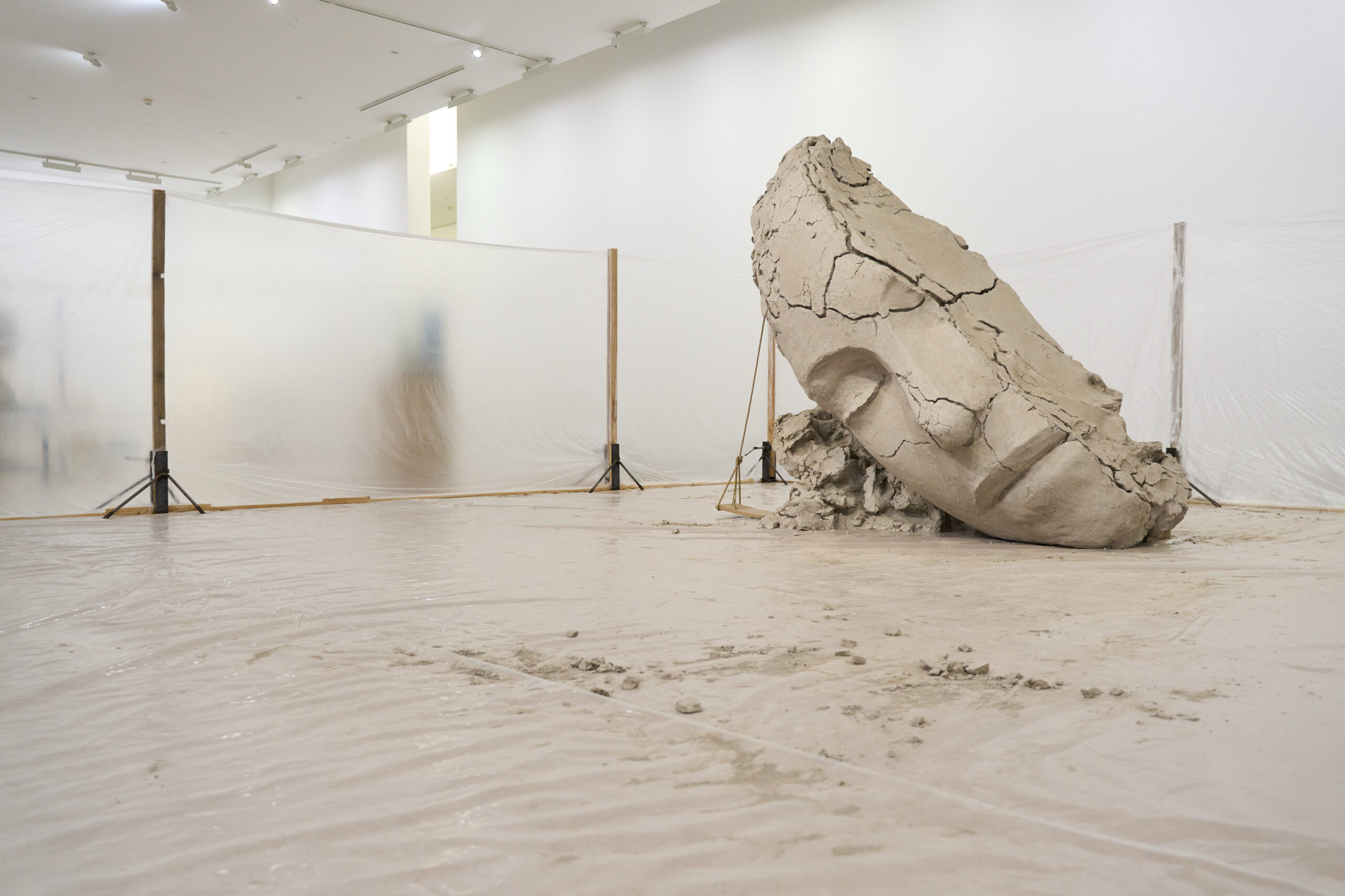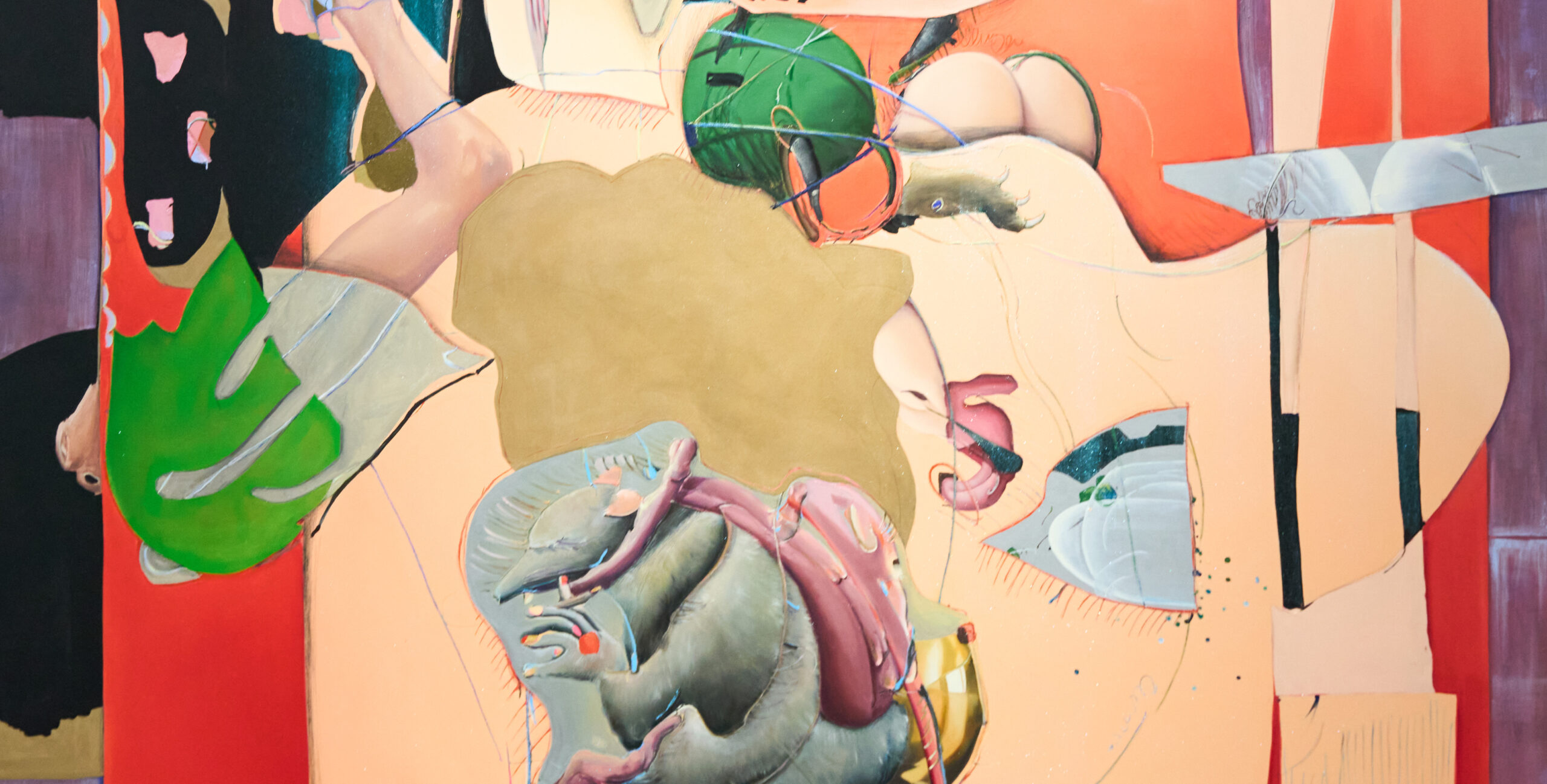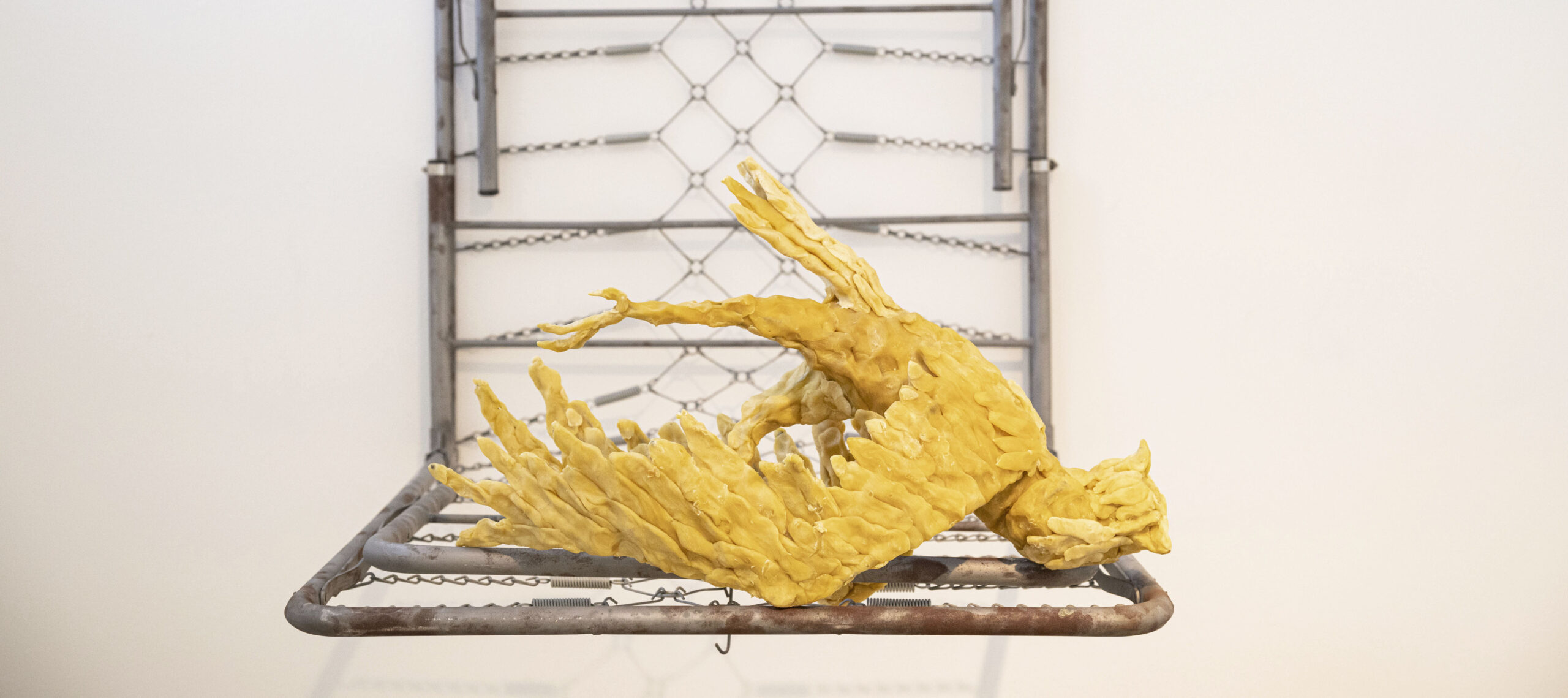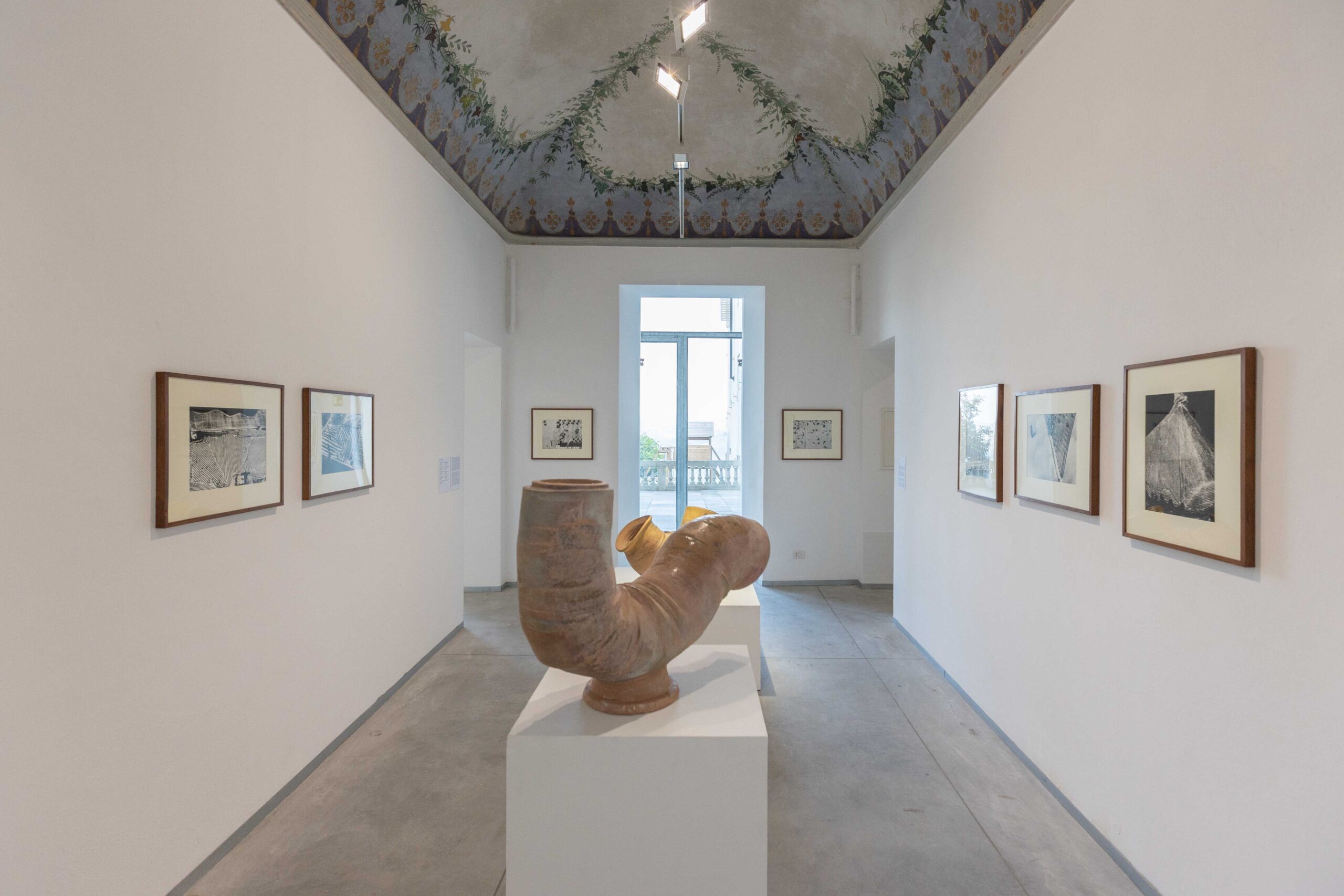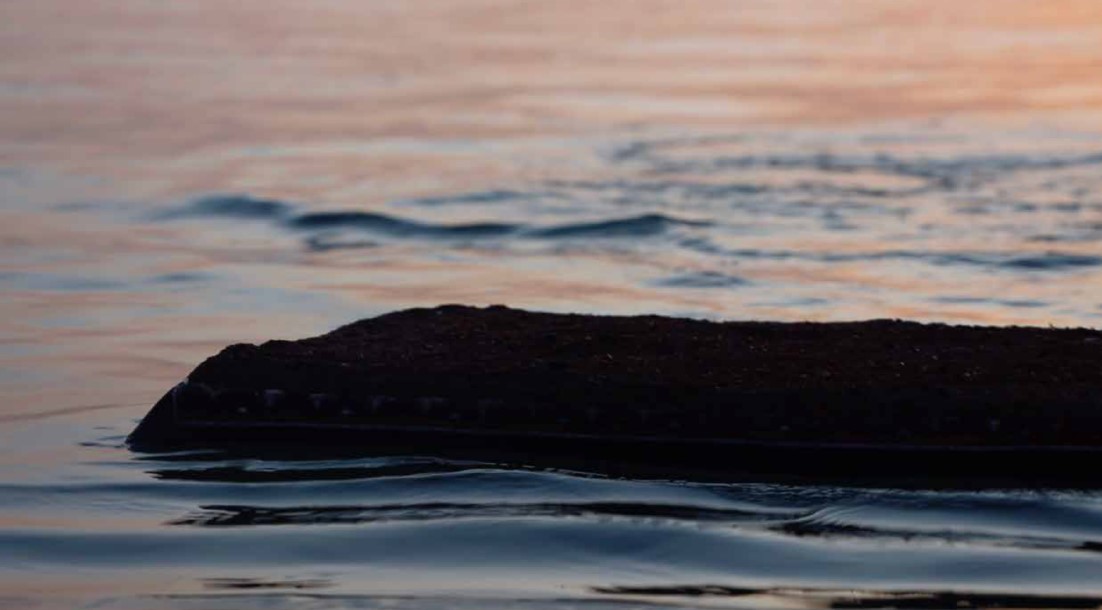In March 2024 Fondazione Sandretto Re Rebaudengo presents What the Owl Knows, the solo exhibition of The Otolith Group, named after the most recent moving image work directed by the artists.
The post-cinematic practice of the artist collective, formed by Kodwo Eshun and Anjalika Sagar, is informed by an attention to an aesthetics of the essayistic that takes the form of a science fiction of the present that seeks to dramatise the interscalar catastrophes of the Racial Capitalocene.
The artists’ preoccupation with rearranging the intertemporal relationships between past, present and future often departs from the existing works of composers, producers, musicians, poets, theorists, and painters. The approaches to sound heard in the works of figures such as Julius Eastman, Codona, Drexciya, Etel Adnan, Una Marson, Denise Ferreira da Silva and Rabindranath Tagore imply a range of artistic methods for rethinking the force, mass and motion of images. This way of hearing across media allows Eshun and Sagar to visit and revisit a sonic practice of image-making which invites audiences to listen to video as a choreography of images in motion. Such an approach asks audiences to encounter the present as a historical experience projected from the horizon of an expectant future.
What the Owl Knows emerges from an enduring friendship between painter and writer Lynette Yiadom-Boakye, Sagar and Eshun. The mutual admiration between the three Londoners provides a precondition for a work that aims to affirm the oblique affiliations within, between and across media. Traditional documentaries and contemporary television, like contemporary museums and galleries, tend to seek the motivation of the painter as a public figure in the search for psychological insight.
In contrast, the work of Eshun and Sagar could be said to be motivated by the desire to frustrate the demand from institutions for biographical explanation. This enduring desire reaches a certain crescendo in What the Owl Knows, a work subtended by the ambition to displace the biographical imperative that informs the histories of cinema’s encounter with painting.
The exhibition attunes the auditor to the tone and the texture of attentiveness devoted by painter Lynette Yiadom-Boakye to the demeanour and the disposition, the manner and the moods within and out with her paintings. What the Owl Knows aims at disarticulating the work of painting. It revels in what it does not reveal. It lingers on details, tarries with fragments and labours on the negative work of decomposing the incremental accretion of the compositional process. It studies Yiadom-Boakye as she studies specific sections within a canvas whose extent we cannot see, ponders her next move, weighs the gravity of adjacent chromaticity and registers the shifting balance of chromatic forces.
What animates the work is an ambition to shift the focus of attention away from the painter, as an object of attention, towards the quality of attention bestowed upon the paint by the painter. What the Owl Knows aspires towards a poetics of recursion in which an audience pays attention to the ways in which digital video pays attention to ways in which a painter pays attention to what she paints.
The attention to the recursive duets with a series of scenes in which Yiadom-Boakye appears as a singular figure, a silhouette under sodium light, unbeholden to the camera, circumnavigating wildernesses of urban London selected for their specific yet undisclosed significance. As Yiadom-Boakye reads from her poems, each of which have been restructured for and by video, a restricted economy of introspective expressionism takes hold of the mise-en-scene.
Suspending documentary cinema’s demand for explanation, it becomes apparent, opens an abyss in meaning that allows for a heightened state of intimation and implication through video’s recourse to the aberrant drama of poetic language. The oscillation between the intimacy of the interior studio and the drama of the exterior setting takes on the structure of a feeling whose interplay gestures towards video’s powers of assembly. In its encounter between painting and poetry, video’s movement from day to night carries Yiadom-Boakye’s night-thoughts from light to dark and back again. To listen to the light of night is to hear the night of day. It is to sense the ceremony of video as it invokes a convocation between the immortality of painting, the dead of poetry and the life of the voice.
The Otolith Group’s attention to the displacement of expectation makes itself felt in the animated allegory that appears at the midpoint of What the Owl Knows. In the animated fable between an Owl and a Pigeon inspired by Eshun and Sagar’s reading of Yiadom-Boakye’s text Plans of the Night, the Pigeon can be understood as the engineer of its own demise hoist by its own petard.
Text by The Otolith Group
The project What the Owl Knows was commissioned by the Association of Visual Artists, Vienna Secession and co-produced by Cooper Gallery, Duncan of Jordanstone College of Art and Design, University of Dundee. The exhibition organized by Fondazione Sandretto Re Rebaudengo is the third iteration of the exhibition tour.
